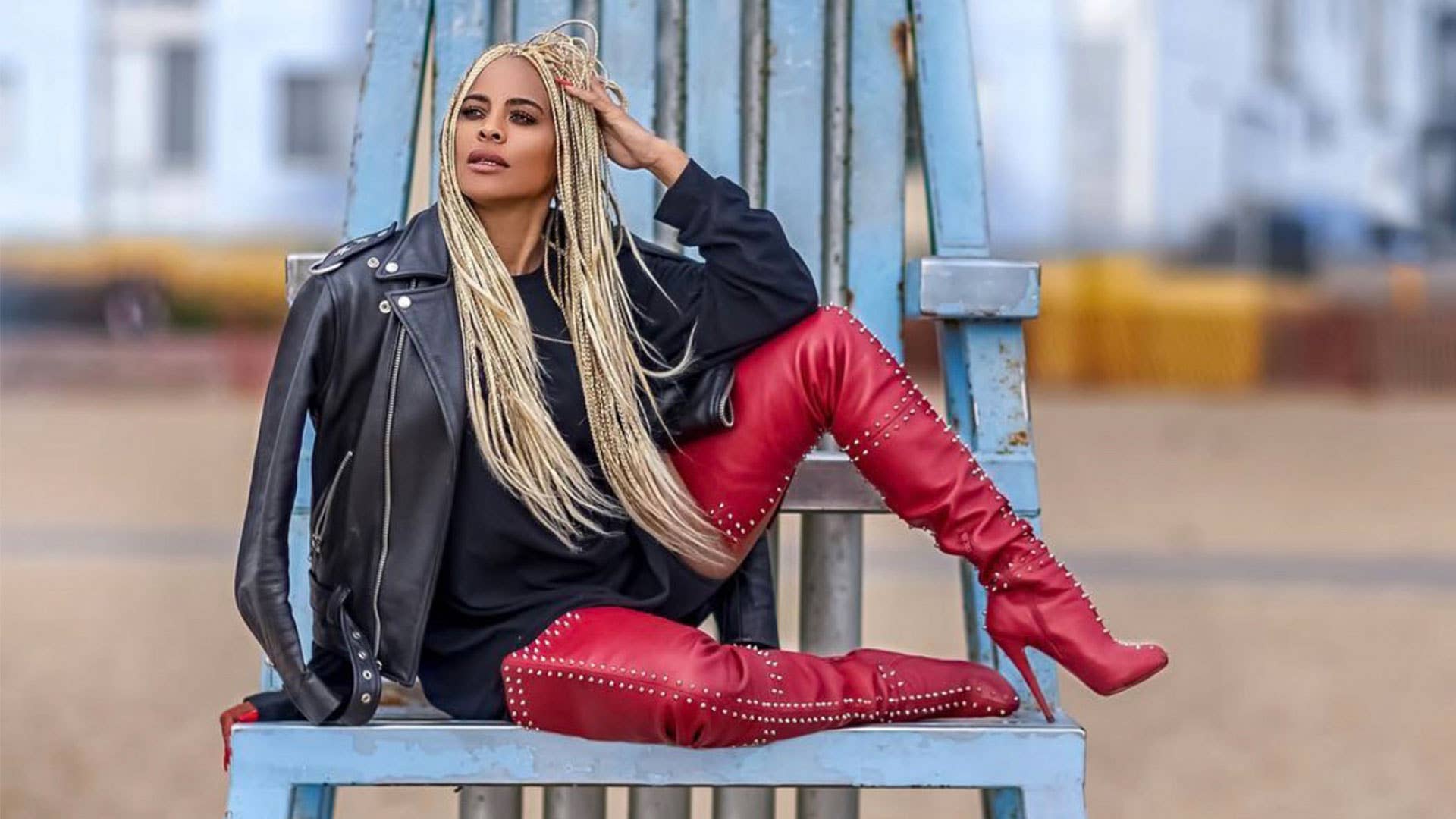
Early in her new book, choreographer and creative director Laurieann Gibson recounts begging her parents not to throw away a cardboard box. Though she couldn’t tell at the time, the box was a metaphor for her career and subconsciously serves as inspiration for an iconic Grammy moment that she’d orchestrate for Lady Gaga. “My mom took that opportunity to ask me what exactly it was I was doing, going in and out of this box all the time,” she writes in the first chapter of Dance Your Dance: 8 Steps to Unleash Your Passion and Live Your Dream. “I told them, ‘I’m birthing myself into the world!’”
Having grown up in Toronto, Gibson left at 17 to study with the Alvin Ailey American Dance Theater. Since then, emerging from the cardboard box was symbolic to her career’s trajectory. She forged her own lane by creating iconic moments as a movement coach and creative connoisseur for everyone from Katy Perry and Nicki Minaj to Michael Jackson and The Notorious B.I.G. Beyond dance routines, she’s known to serve as a creative copilot and sounding board.
On a phone call with Complex after the book’s release, her tone intensifies as she explains, “Everyone has a moment once they make the record when they have to become the record. It’s what the music industry was built on.” That’s where she comes in: by setting the scene with visuals, dance routines, and cross-platform creative concepts, she helps artists become the record. “I often relate what I do to the NBA,” she says. “It’s like Phil Jackson and Michael Jordan: everyone needs a coach.”
By 2000, when she joined Diddy to hone girl groups and boy bands on MTV’s Making The Band, she’d long established herself as a choreographer. But the series introduced her to those who weren’t clued into her work behind the scenes. If you recall, Gibson ruled the dance studio with an iron fist and was known to dole out harsh critique with no room for reproach—a characterization that she says was spliced together with editing. In the book she writes that the relentless choreographer who we came to know on Making the Band “left out a big part of who I am.” Though she admits to occasionally losing her cool, the final cut of the show, she writes, “managed to show a much angrier, less inspirational version of me than what I was in real life.” But Dance Your Dance gives her the last word.
Though we didn’t get around to discussing Making the Band’s upcoming revival, Complex caught up with Gibson to hear more on her new book and her decades-long career.
In 2016 you toured with DMX on the Bad Boy Family Reunion Tour and after he passed you shared a really poignant video of him leading a prayer before a show. What was that experience like?
DMX was an incredible entertainer and we had a really special connection. Bringing him up from the elevator and choosing the timing of his lighting and when he would arrive, he was so clear and specific about how the audience would receive what he had to give. That type of magic doesn’t come all the time and DMX embodied what a real performer is supposed to be. With all the challenges you go through in life, the one thing that happens when you hit that stage is really a different kind of ability and he embodied the greatness of that.
Why did you feel like this was the best time to tell your story?
We had been working on a scripted show and the outline was so amazing that when I read it, it felt like there was a book there. So we went for it. I didn’t know that I had a book, the book spoke to me and said, “I’m ready. It’s time.” After spending the extra time I had as a result of COVID to dive into the process and understand the ‘why’ to the book, it wasn’t about being autobiographical. It was about understanding how to offer eight steps to unleash your passion and live your dream. It was based on a methodology that I designed to help superstars but I wanted it to also help every single person. I wanted to connect with readers who want to understand how to live their passion and see their dreams fulfilled.
The synchronicity of you deciding to write the book and the lockdown happening reminds me of an anecdote that you shared in the book about making the leap from dancer to choreographer to creative director. You wrote, “It wasn’t even my choice, it was my dream’s choice” and this has clearly manifested with bringing this book to fruition. How has it manifested in other parts of your career?
I continued to hang onto the feeling of that dream. I know that I don’t necessarily have all the answers, but the feeling I have when I think of my dream is what continues to push me into the next level and ultimately to my destiny. When the dream told me to write a book, I trusted the timing of it and now I’m in my purpose. It’s not just to inspire and transform superstars, it’s to connect with everyone in a way where we can all feel like our own superstars, especially in a time where the world has changed and the narrative needs to be an empowering one.
What do you think that social media has done to the state of dance? Do you feel like the hypervisibility of TikTok and Instagram dance challenges have made things better or worse?
It’s two-fold. On one hand, the fact that the dances are so prominent is great because dance is full of joy and has entertainment value. As a professional, I’m very clear about the responsibility to identify it as entertainment, versus the perspective that someone who is a TikTok dance influencer should create choreography for a number one-selling artist.
That narrative is misguided. TikTok is not where you find your professional career. It’s thirty seconds of movement. That’s a broken statement, not an entire conversation. It doesn’t show an ability to string movement together to create an impactful experience, like what I’ve done with Gaga or Katy or Nicki. That’s a different level of professionalism.
Is it getting more challenging to break full-package performers in this climate? Has the social media-to-stage trajectory impacted showmanship?
It’s definitely had a negative impact, but it’s up to the real artists and visionaries like myself to understand that where we are doesn’t mean it’s as great as it could be. So if you are signing an artist with high numbers, you’ve got to know why you’re signing them because they might not be able to sustain an entire album, a global tour, or an iconic experience. We’re at a turning point where we need options and we need developed artists to be supported enough to be working, competitive, and financial successes in the music game.
Is it harder? No, because I know what I do and what the greats do when they’re properly developed. That experience is undeniable. So yes, I believe that the music industry has a responsibility to recognize the limitations and change that conversation. You sign people because they’re great and talented and you develop them so they can be around for a long time. You’re a lazy executive if you’re signing an artist who doesn’t have the ability to sustain an album.
If you had to boil it down to two projects that you’re proudest of, which would they be?
They’re all my proudest moments. The Monster Ball Tour being one of the most iconic tours ever, the Pinkprint being one of the most iconic tours ever, obviously Bad Boy and working with Puffy—everything. They’re all big moments, even when they’re not on the big stage. Moments with myself when I don’t give up in a trying time mean more to me than anything, though. When I’m at my weakest and I still manage to persevere, those are the greatest times in my life.
Who are two new artists you’re excited about?
I’m working with a new global pop sensation named Natasha and she might be my finest student yet. I’m also very excited about an R&B girl signed to Universal Canada named Gogo. She’s exceptional.

